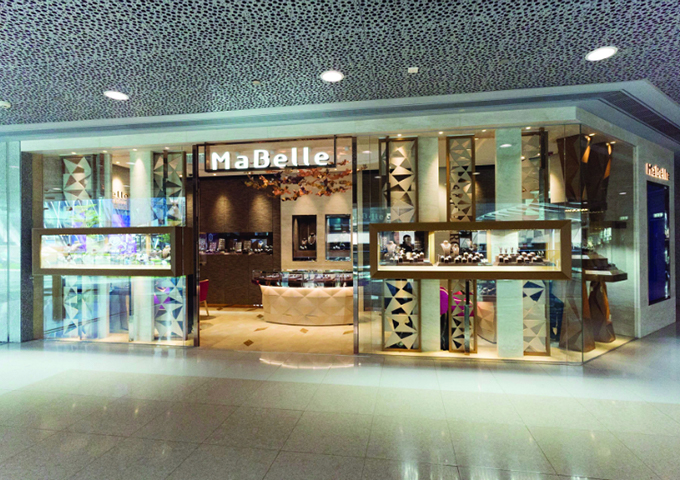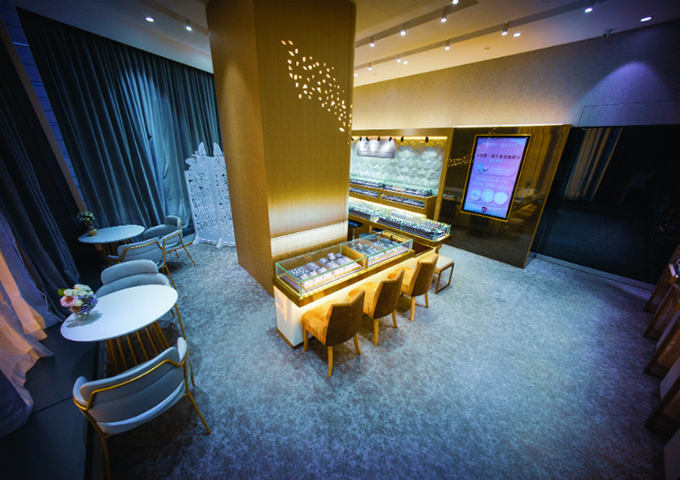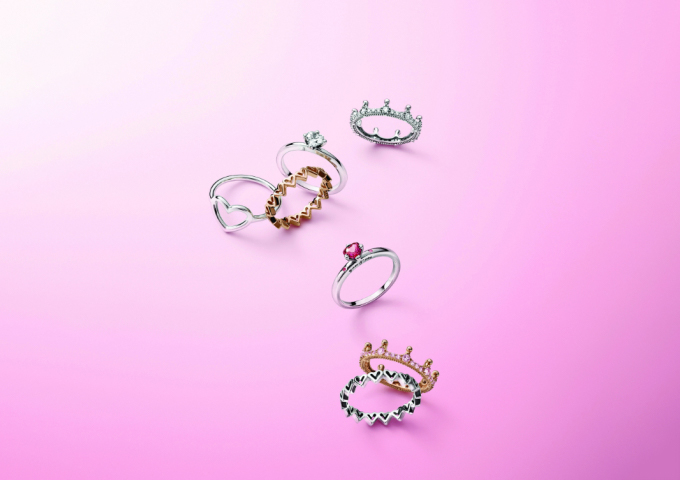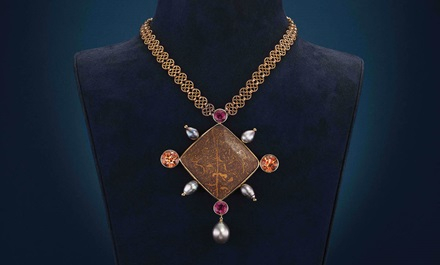Online shopping continues to make waves globally amid an era of digitalisation. What are jewellery brands doing to take advantage of digital technology and the ever-growing online consumer market to expand their businesses?
Consumers around the globe are using digital media more frequently than ever, according to US independent research institute eMarketer's Time Spent with Media 2019 report.
The study, which tracks media usage across nine markets in the US, Europe and Asia among others, shows that time spent on digital media in the US alone accounts for six hours and 35 minutes – more than half of the daily average media usage of 12 hours and nine minutes.
In 2019, US consumers were found to have spent more time with their mobile devices than their TVs for the first time – three hours and 43 minutes on average, with smartphone penetration among adults reaching 80.5 per cent.
Consequently, the number of online shoppers is rising rapidly. According to global analytics firm Nielsen, a special subgroup strongly engaged in online activities will account for 40 per cent of the global population in 2025. Identified as “connected spenders,” these people go online every day, turn to online forums or communities before making a purchase, recommend products to acquaintances, and are willing to try new and different things. Known as “the digital consumer of the future,” they are expected to contribute to over half of overall global retail sales total in 2025.
With the rising influence of digital media on consumers and their buying habits, digital technology has become crucial to global economic growth. Companies from many industries have invested significantly in research to maximise this tool. How are jewellery retailers responding to this digital revolution?
Digital innovation
Danish jewellery brand Pandora is at the forefront of digital transformation to meet consumers' demand for an integrated omnichannel platform.
In its 2019 annual report, the brand said the omnichannel approach has become standard for many retail brands that strive to attract consumers using a seamless online and offline shopping experience. With over 340 million website visits and 23.5 million followers on Facebook and Instagram in 2019, the brand's online sales rose 18 per cent year on year to DKK278 million (around US$ 40.2 million), accounting for 13 per cent of total sales.
In January, Pandora said it is establishing a new digital hub that will employ around 80 employees in 2020.
“Based in Copenhagen, the group is tasked to boost the brand's digital presence, omnichannel expertise and use of customer data to better personalise customer experience,” noted David Walmsley, chief digital and omnichannel officer of Pandora.
The group is expected to become operational in April 2020. Pandora's digital renovation started as early as 2018 through Programme NOW, which aims to foster its omnichannel capabilities.
According to its annual report, various new features were launched in 2019 under the omnichannel objective, including helping customers draw up wish lists online before they head to the store. In the US, store staff can easily check their online inventory and offer to order an item in case it is not immediately available, noted Pandora.
In conjunction with this, the company introduced a redesigned online store with a “mobile first” design that is faster, has better product images and improves the balance between storytelling and transactional content.
Research and advisory company Gartner, in its Digital IQ Index: Watches & Jewelry Global report, said the new online store offered “a strong onsite experience, complete with feature-rich keyword search and visual filters.” The report ranked Pandora fourth among digitally competent global brands.
With these achievements along Pandora's digital path, Walmsley said the key is creating a great customer experience as a global brand.
In an interview with JNA, he revealed that the newly set up digital hub's focus is to create a genuinely connected experience between Pandora and its customers globally.
“Everyone at Pandora is focused on providing great service to our customers and that does not vary between digital and physical channels,” he noted. “We need to be where our customers are. It's important that we all stay as close as possible to our customers' needs every day.”
The approach also varies in different markets. “Our primary digital focus in some markets is selling through online marketplaces, particularly in China. We are also focused on building richer and deeper conversations with our customers across the social space in different territories.”
Customers first
Customers are the core of every brand, remarked Lawrence Ma, CEO of Lee Heng Diamond Group.
“Digital technology is a rising trend but it needs to fit the business model of your company and the needs of the customers since they are fundamental to a brand,” Ma told JNA.
Lee Heng Diamond Group is the mother company of MaBelle, a Hong Kong-based diamond jewellery brand targeting the local market, and three other diamond jewellery brands with different market positioning. According to Ma, ecommerce in jewellery trade – limited by the nature of diamond jewellery products – lags behind other sectors, but remains a viable marketing and promotional channel.
“Unlike other consumer products sold online, diamond jewellery is expensive. The more expensive the product, the more popular it is because customers like investment,” he revealed. “They also put a premium on the experience and services that they enjoy in a physical store.” Product returning, while crucial to online stores' business model, puts pressure on traditional diamond jewellery retailers should they expand their online business, he added.
Ma further said items that cost HK$2,000 to HK$ 3,000 (about US$257 to US$385) per piece move faster online, with gold jewellery selling easier than diamond pieces.
MaBelle's current online channels include Mabelle.com and fanShare, a mobile application platform. The fanShare app is linked with the brand's Mabelle Reward programme and provides members with details on latest events, discount offers and new arrivals. With a built-in live chat function, customers can easily inquire about a product and set up appointments. The app also encourages members to share the products they love with friends.
Ma underscored the effectiveness of this digital marketing strategy for MaBelle, in particular. “A digital strategy needs to suit one's own business model. Every company should know its own limits and choose a target customer segment accordingly. With customers in mind, companies provide products and services according to their needs and reach them in the most effective way.”
Make your digital ads more effective
Dave Chan, vice president of digital business and advanced analytics for Asia and consumer goods at Informa Markets' global digital services, also underscored the importance of digital marketing in today's business world.
“While today's media is more fragmented, online channels offer opportunities that traditional channels don't. Here is where we come in,” noted Chan. “We can target advertising to demographic groups by gender, age bracket, location and interests. That means we can zero in on an audience, which is more likely to be interested in our products or services.”
Chan further revealed, “One of the biggest advantages of digital marketing is its scalability. You can be a small store in a city suburb with a modest budget or you can be a giant multinational with both physical and online stores and a much larger target audience. If you deliver the message clearly and efficiently, it can work just as well.”
He further shared practical tips to make ads more effective. To capture the viewer's attention, the ad has to be visually interesting and eye catching. The challenge is to “freeze the thumbs” of media users and get them to stop scrolling and read the ad.
Like the platforms that carry it, effective digital marketing is dynamic, engaging and interactive, with a simple and clear message. Shorter text is easier to read, helping the viewer capture the message faster.
Secondly, the ad must have a prominent, instantly executable call-to-action as this helps drive leads and conversions. An example would be encouraging customers to further explore your products and services or join a mailing list. A well-organised digital marketing initiative can achieve instant results but long-term brand building and positioning to remain top-of-mind among consumers requires a more durable approach. It must be done regularly across multiple platforms and encourage engagement, which is not necessarily directly related to a sale such as entering a contest or playing a fun game.


















